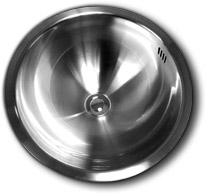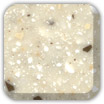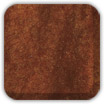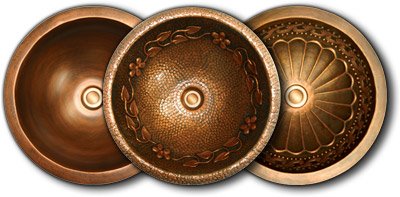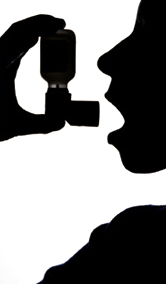Windows and MirrorsIn a 32 oz. spray bottle, add 1/3 cup white (clear) vinegar and 1/4 cup rubbing alcohol. If you absolutely must have another cleaner, add 1 tablespoon automatic dishwashing detergent.
Tubs and Shower StallsAlkaline deposits in the water cause those not so pretty spots on your glass doors and shower walls. Apply a car wax to the walls and doors, but not the floor or it gets real slick. Both fiberglass and glass are porous. The car wax seals those pores, which makes cleaning easier and keeps water spots away. Reapply twice yearly.
Squeegee or wipe down your shower after each use to further prevent buildup. If you're tired of fighting the soap scum buildup, switch to liquid soap, natural soap or Dove. It's the talc in most bar soaps that causes the buildup. Changing soap can eliminate the buildup. You still need to clean the shower once a week, but the job is easier.
Clean the showers once a week with an orange citrus based cleaner. Spray on and give it ten minutes to dissolve the dirt. Why do all that scrubbing when your product does it for you?
OK, so the soap scum refuses to budge and friends are coming for a visit. Use your orange based cleaner concentrated. Pour plenty on an old dishrag and wipe on the walls and doors. Use can use boiling hot white vinegar (wear gloves) but you must keep applying it as the white vinegar dries. It takes time to dissolve that buildup.
Patience now becomes a virtue. Wait and wait and wait some more. Go clean the rest of the house. If the cleaner starts dripping down the walls, wipe it back on. Check the walls with a fingernail. If the residue removes easily, round one is about over.
Use a white bristle pad to scrub. They look like fibers and are glued to a sponge. Use the white ones only. The colored scrubbers are coarser and do scratch. Test a spot to make sure it won't scratch the fiberglass. Dampen the pad, keeping it good and wet and gently scrub. This removes the soap buildup and most of the white mineral deposits on the glass doors. Nothing removes the etch marks themselves, but further damage is halted. Reapply the orange citrus cleaner if necessary.
Plastic shower curtains can be machine washed. Remove, spray with your diluted orange based cleaner and wait about 10 minutes. Wash with your rags and they come out quite clean. Air dry. If the curtain is long enough, cut off the seam at the bottom to prevent mildew buildup down there.
ToiletsRing around your toilet? Again, alkaline deposits cause those nasty rings. Depending on the hardness of your water, pour one or two cups of white vinegar into the toilet once a month to eliminate the problem.
Toilet bowl rings - Here I take a deep breath and plead with you to follow these instructions. Repeat. Follow these instructions. Do not deviate or you will scratch the inside of your toilet bowl.
Turn off the water flow to the toilet and flush to remove the water. Saturate a couple of heavy duty paper towels with white vinegar or the Orange Citrus Cleaner. Place around the edges making sure all areas are covered. Keep the towels damp for several hours, even overnight, until the water spots start dissolving. Then scrub with a stiff nylon brush.
If the white vinegar does not dissolve the whole ring, go to a janitorial supply store or a hardware store and purchase a pumice stone and a stiff toothbrush. Dampen one end of the pumice stone and keep it wet.
Gently, very gently, rub the pumice stone across the lines. When enough pumice builds on the sides, switch to a stiff bristle brush to continue working. Rub gently until the deposit disappears. Pumice will scratch the toilet. Use it only one time and cautiously.
Sinks
Once a month, pour one cup of baking soda, followed by one cup of white vinegar down the drain. Wait an hour and flush with warm water. The combination fizzles away most of the buildup. Works for shower, tub and kitchen sink drains as well.
FaucetsWater deposits build up around faucets and drain areas. Use a paper towel soaked in white vinegar and place around the faucet. Plug the drain and pour 1/2 cup white vinegar in the sink and wait. It takes time for the white vinegar to dissolve the alkaline deposits. Scrub using a stiff bristled nylon toothbrush.
Do not use orange based or powdered cleansers on brass or gold plated faucets. These fixtures corrode and scratch quickly. Dry these faucets after each use to prevent water spot damage.
MildewKeep ahead of mildew so it doesn't become a problem. Every six months spray your bathroom ceiling with a 50/50 solution of hydrogen peroxide and water. Peroxide is a safe bleach and won't harm the environment or your lungs. Find larger quantities of peroxide at beauty or medical supply stores.
Spray the mixture on and leave it. No need to rinse or scrub. If you currently have mildew, follow the above directions. Wait two hours and respray. Then wait 24 hours and spray a third time if necessary.
Article Source: Doityourself.com




